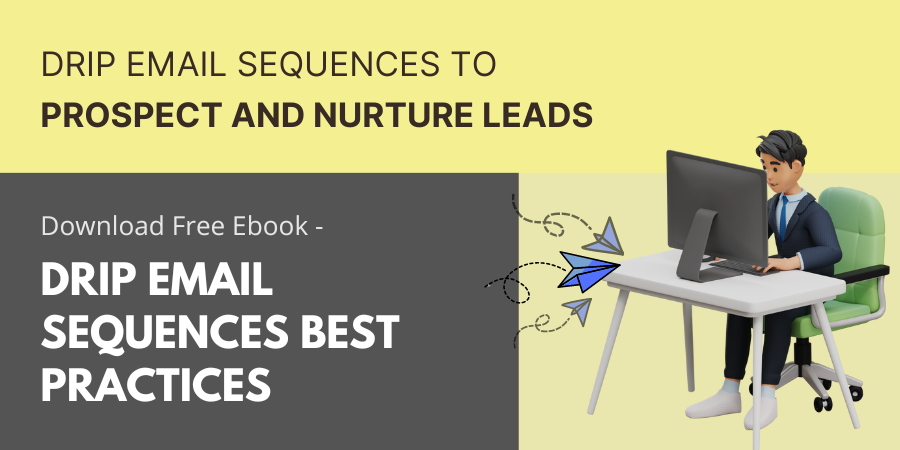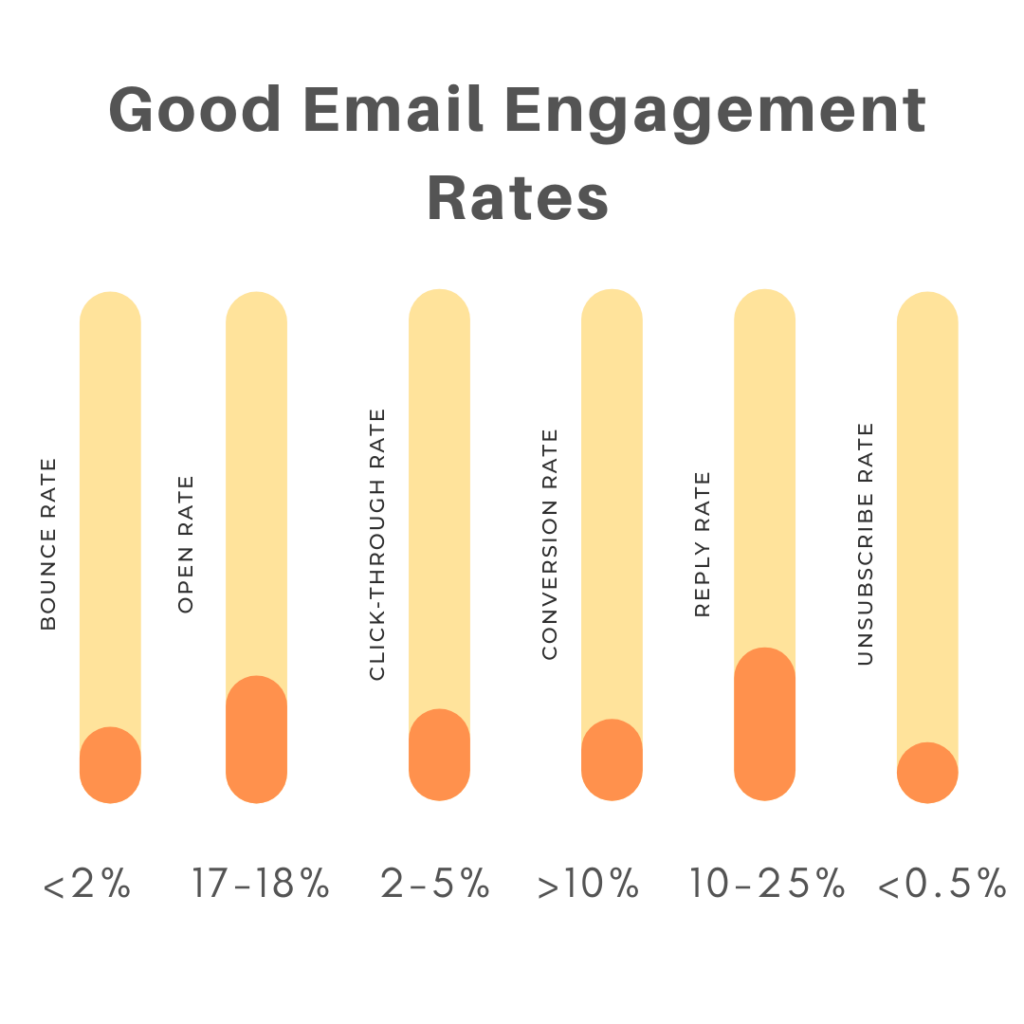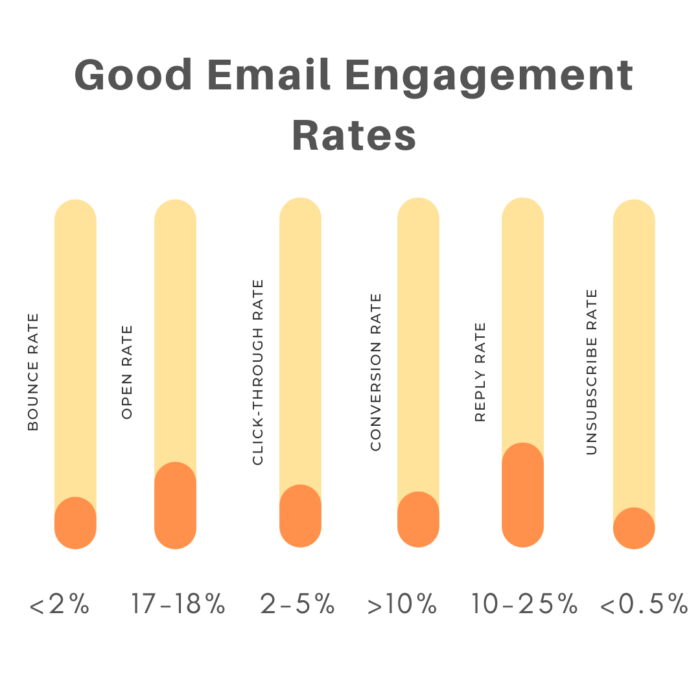Your email sequence campaign is ready and running. But how do you whether it will perform well?
Simply by measuring the email engagement rate. There are certain important metrics that you can track to do so.
This will help you have a better understanding of how your emails are performing and improve your sequential email marketing strategy.
In this article, we will explore how to measure email engagement for email sequences and which tools can help you do so.
So, let’s dive in.
How to measure email engagement for email sequences?
Email engagement can be measured using various metrics. So, gain insight into the effectiveness of your email campaigns and improve your email engagement by analyzing the following metrics.


1. Bounce rate:
This is the first metric that you need to track as it measures the percentage of emails that were undeliverable due to an invalid email address or other technical issues.
Until and unless you know this, tracking the other metrics won’t be essential.
So, divide the number of bounces by the number of emails sent for each email in the sequence to measure the bounce rate for an email sequence.
In case, you find out that your bounce rate is high, identify the issue and work on it. Generally, 2% or less is accepted as a good email bounce rate states the data from Outfunnel. Anything more than that is a warning bell.
Once you are confirmed that your email deliverability is good, begin measuring the other metrics.
2. Open rate:
Next, you should measure the open rate. It can help you identify the effectiveness of your subject line for each email in your email sequence.
To measure the open rate for an email sequence, divide the number of opens by the number of emails sent for each email in the sequence.
A good open rate is between 17-18%, but if the percentage is low, make sure to work on your subject lines.
3. Click-through rate (CTR):
Then moving on to CTR, you can measure the percentage of recipients who clicked on a link within your email.
To measure CTR for an email sequence, divide the number of clicks by the number of emails sent for each email in the sequence.
2-5% will be considered as a good CTR based on the industry you are in states the data from Campaign Monitor.
If you get anything below that, identify the issue and take appropriate action.
4. Conversion rate:
This metric can help you measure the percentage of recipients who completed a desired action after clicking on a link.
To measure the conversion rate for an email sequence, divide the number of conversions by the number of click.
Anything above 10% will be considered as a good conversion rate.
5. Reply rate:
Reply rate is the percentage of recipients who replied to your email.
You need to divide the number of replies by the number of emails sent for each email in the sequence to measure the reply rate for an email sequence.
This will help you understand which emails are performing well.
6. Unsubscribe rate:
It helps you measure the percentage of recipients who opted out of your email sequence.
To measure the unsubscribe rate for an email sequence, divide the number of unsubscribes by the number of emails sent.
A unsubscribe rate below 0.5% is considered good for an email campaign.
If the unsubscribe rate for a particular email is high in the sequence, identify the cause and work on it.
This way, you can identify which emails are performing well and which ones need improvement. You can use this information to optimize your email sequence and improve engagement with your subscribers.
Tools used to measure email engagement for email sequences
1. Google Analytics for measuring email engagement:
Google Analytics is a free web analytics tool that allows you to track website traffic and user behavior.
You can use it to track the performance of your email sequences by setting up conversion goals and tracking email campaign performance.
You can track metrics like bounce rate, conversion rate, and revenue generated from your email campaigns.
To track email engagement using Google Analytics, you need to add tracking codes to your emails and landing pages.
A drip email automation software like SafeMailer can also be integrated with Google analytics to track your email engagement rate.
2. Social media tools:
Even social media tools can be used to track user behavior on your website after they click on links in your emails.
One such tool is Facebook Pixel, which is a tracking code that businesses can install on their website to track user behavior and actions.
You can use it to track the performance of your email campaigns by tracking conversions and revenue generated from Facebook ads.
To use Facebook Pixel to track email engagement, you need to install the code on your website and create a custom audience based on email addresses.
You can then create Facebook ads targeting this audience and track their performance.
3. Email service providers (ESPs):
Most ESPs offer built-in email analytics tools that allow you to track the performance of your email campaigns.
For example, ESPs like Mailchimp, Aweber, and SafeMailer offer detailed email campaign analytics, including open rates, conversion rates, bounce rates, and unsubscribe rates.
You just need to create an account with the provider and set up your email campaign to track email engagement using an ESP.
The provider will automatically track the performance of your email campaign and provide you with detailed analytics reports.
Conclusion:
Measuring email engagement rates is essential for understanding the effectiveness of your email sequences and optimizing your email marketing strategy.

By tracking metrics such as open rates, click-through rates, conversion rates, reply rates, bounce rates, and unsubscribe rates with the help of certain tools, you can gain insights into how recipients are interacting with their emails.
This will greatly help you improve your email sequence strategy.


Leave a Reply